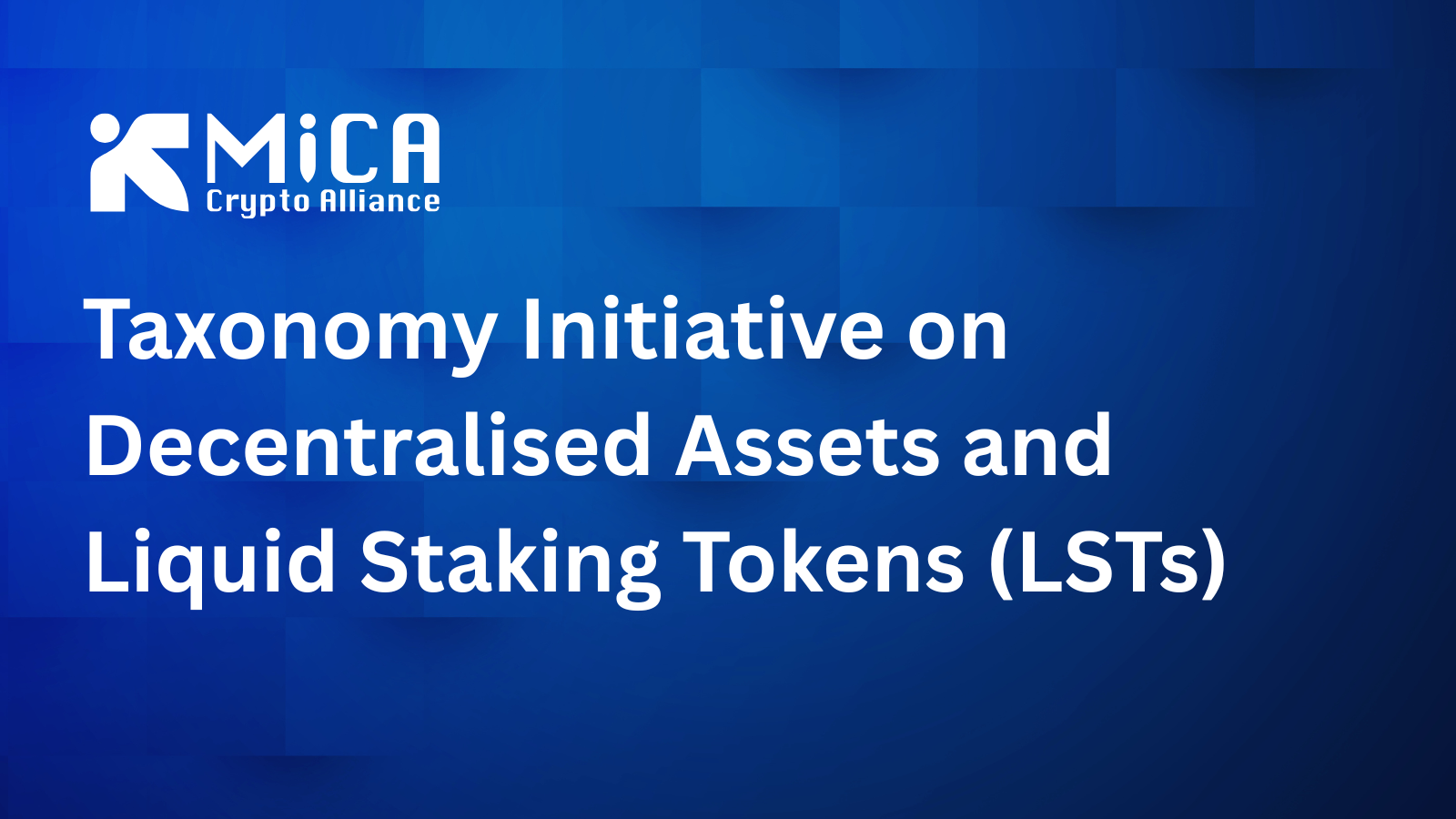MiCA Crypto Alliance Launches Taxonomy Initiative on Decentralised Assets and Liquid Staking Tokens

London, 6 October 2025 – The MiCA Crypto Alliance is launching a dedicated initiative to develop an academically grounded taxonomy of decentralised assets, with a particular focus on liquid staking tokens (LSTs). The project is supported by Exponential Science and BlackVogel.
The effort responds directly to a gap identified at the Digital Assets Roundtable Expert (DARTE) Series Vienna 2.0, where practitioners, legal experts, Layer-1 and exchanges underscored the persistent difficulty of classifying decentralised assets under the EU's Markets in Crypto Assets Regulation (MiCA). LSTs exemplify these challenges: typically minted by autonomous smart contracts, they enable users to participate in staking while retaining liquidity, yet they are not price-stabilised by reference to other assets and present unclear redemption rights. As a result, they may not fit existing MiCA categories (e-money tokens, asset-referenced tokens, or other crypto-assets).
Addressing a regulatory and industry need
This classification gap carries wider implications. Where decentralised assets such as LSTs generate returns, they may instead fall under MiFID II or AIFMD as financial instruments. Conversely, regulators may consider classifying or reclassifying such instruments as MiCA asset-referenced tokens (ARTs). Either path raises complications because ART rules assume a centralised issuer responsible for publishing a white paper and bearing liability, and this assumption does not align with decentralised protocols.
For crypto-asset service providers (CASPs), the result is heightened liability risk, delays and friction in classification inquiries, and broader legal uncertainty. Participants at the DARTE Roundtable called for rigorous academic research to establish a taxonomy framework for decentralised assets as a foundation for legal classification.
The MiCA Crypto Alliance is accepting this invitation and rising up to the challenge. While not a regulatory taxonomy, the project is designed for regulatory relevance: it aims to provide a structured, peer-reviewed framework that helps regulators, crypto-asset service providers and market participants consistently assess decentralised assets. The work will proceed in two stages: (1) core technology research, and (2) a working group of industry stakeholders to refine the technology lens and support legal interpretation. Findings will be published as a peer-reviewed academic article and policy brief for regulators to help reduce fragmentation across Member States.
Academic rigour and industry validation
The research project will be led by Dr. Jiahua Xu, Head of Science at Exponential Science, and Juan Ignacio Ibañez, the General Secretary of the MiCA Crypto Alliance. The framework will move beyond generalist classifications to incorporate dimensions with regulatory relevance, including:
- Centralisation vs. decentralisation by design (e.g. identifiable issuer, minting mechanism, backdoors for intervention).
- Yield generation and financial characteristics, with implications for investment product classification and taxation.
- Collateral processing models, distinguishing lock-and-mint from burn-and-mint, with consequences for whether assets resemble custody relationships or financial instruments.
Mariana de la Roche, Founder of BlackVogel will then lead a structured industry review inviting exchanges, CASPs and legal practitioners to provide feedback, ensuring the final framework is both academically robust and grounded in market reality.
Call for participation
The MiCA Crypto Alliance invites industry stakeholders to engage in two ways:
- Expert Review: Join the academic consultation on the draft taxonomy by completing this form
- Endorsement: Support the final submission to ESMA through organisational sign-off. To express interest, please email: contact@micacryptoalliance.com
Timeline
- Mid-November 2025 – deadline to join the working group
- End of December 2025 – release of final paper and submission via ESMA’s Q&A
Statement from the Alliance
“Classification of decentralised assets under MiCA is one of the most pressing regulatory challenges today. With this initiative, we are building a structured, academically rigorous framework that regulators and practitioners can use in practice. We welcome contributions from across the industry to ensure it reflects real-world needs.” – Juan Ignacio Ibañez, General Secretary, MiCA Crypto Alliance.
📄 Download the briefing here: https://www.micacryptoalliance.com/reports/taxonomy-initiative-on-decentralised-assets-and-lsts









